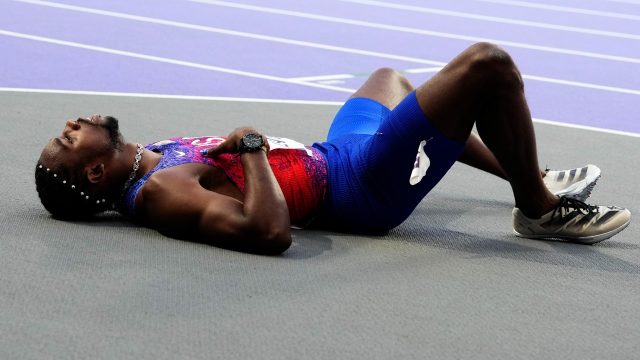
With almost 11,000 athletes from around the world competing at the Olympics in Paris this summer, it seems inevitable COVID-19 would make its way to France.
On Thursday, American sprinter Noah Lyles made headlines for winning bronze in the men’s 200m after testing positive for the virus. While some fans see the result as an accomplishment considering his compromised state, others have questioned the logistics and safety of competing with the illness.
According to TIME, at the Paris Olympics athletes are only tested if they have persistent cough, fever or sore throat. If COVID-19 is present, it’s being “treated like any other respiratory illness such as the cold or flu.” This means there are no rules preventing athletes from competing or training as long as they are able.
“We will allow them to train and compete as long as they feel up to it,” a USOPC spokesperson told TIME.
However, there are rules in place to safeguard other athletes in the Olympic Village. If someone tests positive, they are moved to a single room with delivered meals to help limit the chance of spread. Additionally, athletes with the virus receive separate transportation to and from training and events.
According to a statement from USATF, “necessary protocols” were taken to prioritize the wellbeing of Lyles and his teammates after the 27-year-old tested positive on Monday. Lyles chose to compete in the 200m, which was respected by USATF and the USOPC.
Other athletes who have publicly announced they competed with COVID-19 at the Paris Olympics include British swimmer Adam Peaty and Australian swimmers Lani Pallister and Zac Stubblety-Cook.
A Paris 2024 spokesperson told TIME “we are carefully monitoring the health situation in close coordination with the Ministry of Health.”